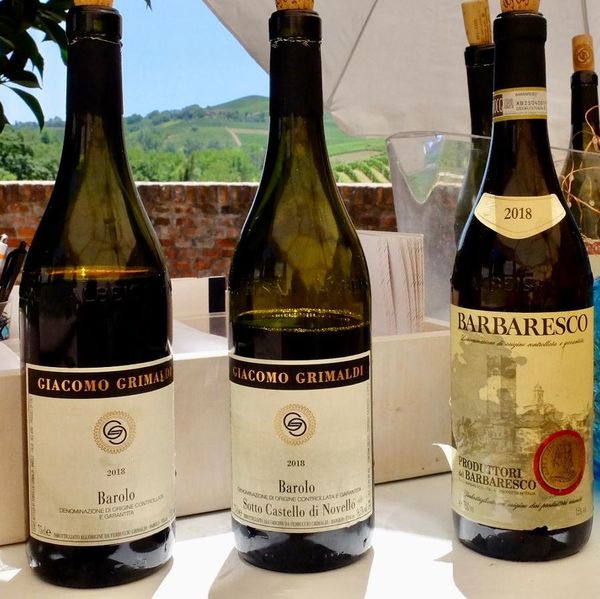.jpg)
Whilst Port remains a firm favourite on the wine list, Sherry is much less popular than it once was, but there is something of a revival underway with people discovering “Sherry and Tapas” and drinking it like the Spanish themselves do. Sherry is remarkable value for money, truly one of the bargains of the wine world.
Sherry comes from around the town of Jerez in Andalucía, Southern Spain, where the weather is hot and dry. Here the conditions preclude making table wine of any quality and historically wine was fortified to act as a preservative and prevent the wine from “going off” (much in the same way as Port and Madeira).
Almost all Sherry is made from Palomino, a white grape variety that produces a dry, neutral white wine of very little character. This is the “blank canvas” on which the artistic Sherry maker paints.
Taking the base wine, which is usually around 12% abv, the wine is fortified using grape brandy to either 15% abv or 17% abv. The resultant young Sherry is then placed into large barrels (Butts) of 600L, but unlike conventional winemaking, a large airspace is deliberately left above the wine in barrel. Whether fortified to 15% or 17% abv, Sherry is matured in barrel for many years, with vintages blended together using the unique Solera system to create consistent wines.
The Sherry fortified to 15% allows the “miracle of Jerez”, the formation of Flor, a special type of yeast that grows on top of the Sherry, protecting it from the air, and creating the unique, intense “Sherry nose” of almonds, yeast, bread and saltiness, whilst simultaneously consuming any residual sugar and also lowering acidity. This produces a pale, intensely flavoured, very dry, low acidity and delicate wine called Fino, or if aged in nearby Sanlúcar, Manzanilla. The Sanlúcar-aged Manzanilla’s are even lighter, drier, and more delicate than Finos, with a distinctive “sea air” about them.
Fino and Manzanilla, always served well-chilled, make fabulous aperitifs, especially if accompanied by olives or even better, salty, fried Spanish queen almonds. They also go very well with seafood; we could perhaps recommend Calamari?
The Sherry fortified to 17% prevents Flor growth and instead the Sherry is exposed to air. However, 17% abv prevents deterioration in wine condition, and instead the wine takes on the positive aspects of deliberate oxidation, developing a deep amber colour and in time becomes brown. The aromas are of dried fruits and nuts. Again, the wine is mainly dry, although some wines are medium. These Sherries are called Oloroso.
Oloroso Sherries compliment meat-based tapas, especially anything with Chorizo. They are also a remarkably good match to main courses, lamb, beef or pork.
Some developing Fino Sherry is refortified to 17% abv, which kills off the Flor. This Sherry then ages oxidatively like Oloroso, retaining its Fino type nose, but then deepening in colour and acquiring dried fruits and nuts aromas as well. These Sherries are called Amontillado.
Amontillado Sherries are the most versatile of all. They retain the lightness of Fino but also have the depth of Oloroso. As such they are suitable for both aperitifs and main courses, and almost all types of tapas. Perhaps they are most suited to chicken and vegetable-based dishes, and whatever you’ve put in your Paella.
There are many other types of Sherry, but another that is worth seeking out is based on an entirely different grape variety that gives its name to this Sherry, Pedro Ximenez (PX). These white grapes are air-dried in the hot sun after harvest, creating raisins that have lost almost all of their water. The remaining grape juice is thus intensely sweet. Once a base sweet wine is made, it is fortified to 17% and long-aged like Oloroso. The resultant Sherry is deep brown-black, and lusciously sweet, with powerful dried fruit and nuts aromas. It has been described as “Christmas Pudding” in a glass.
PX sherry is a firm Christmas favourite, but if you can’t wait that long, try pouring it over vanilla ice cream – yum!
Four to try
Manzanilla Sherry Pasada Pastrana NV Hidalgo, Majestic Wines £14.99 (75 cl)
An intense nose of apple skins and nuts leads on to a palate characterised by classic notes of almonds, orange peel and a salty twang. A prolonged finish marks this out as a wine of real quality. This Manzanilla should be served chilled as a stunning apéritif, with salted almonds.
Tanners Blend of Amontillado Medium Dry Sherry £12.80 (75 cl)
A mature Amontillado style with attractive nutty notes on the nose that is particularly good value. Elegant and refined on the palate, it is medium-dry without being as sweet as some others.
Williams & Humbert 12-Year-Old Oloroso Sherry. Waitrose £8.79 (75 cl)
This is a beautifully bright amber coloured sherry with intense and classic oloroso aromas of walnuts, almonds and dried fruit. Luscious yet perfectly balanced this is a deliciously rich, dry style with a smooth finish.
Sainsbury's 12-Year-Old Sweet Pedro Ximenez, Taste the Difference. Sainsbury’s £8.00 (50 cl)
Thick, rich and deliciously chocolaty and dark, the raisin and fudge, the rum-soaked concentration is gorgeous, the acidity pure and beautifully matched, a great PX - surely one of the great bargains of the wine word?
Even better than reading about it, why not grab a place on our Sherry and Tapas Masterclass?

.jpg)

